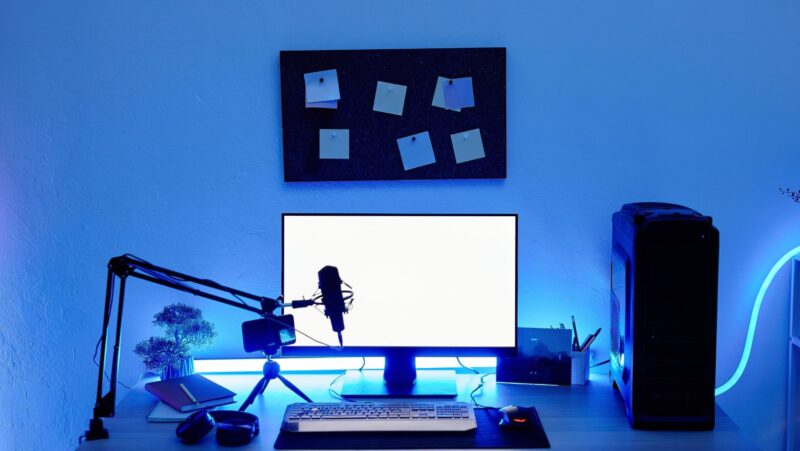Can You Upgrade A Prebuilt PC
What Is a Prebuilt PC?
A prebuilt PC comprises components selected and assembled by a manufacturer or retailer, offering a ready-to-use computer out of the box. Typically targeting gamers, graphic designers, and general consumers, these systems are known for their convenience and reliability. Unlike custom-built PCs where every component is chosen and assembled by the user or a professional, prebuilt computers come with a predefined hardware configuration. This setup ensures that all components are compatible and optimized for performance, reducing the hassle for users who may not have the technical expertise or time to build a computer from scratch. Despite the benefits, users often wonder, “Can you upgrade a prebuilt PC?” to keep up with newer software demands or improve performance.
Can You Upgrade a Prebuilt PC?
 Upgrading a prebuilt PC is not only possible but often recommended for those looking to enhance their system’s performance. Most prebuilt PCs come with a certain level of flexibility allowing for hardware upgrades such as adding more RAM, swapping out the graphics card, or upgrading the CPU. However, it’s essential to check compatibility with the existing motherboard and power supply before making any changes. Upgrading can extend the lifespan of a prebuilt PC, enabling it to meet new software demands and improve functionality for gaming or graphic design tasks.
Upgrading a prebuilt PC is not only possible but often recommended for those looking to enhance their system’s performance. Most prebuilt PCs come with a certain level of flexibility allowing for hardware upgrades such as adding more RAM, swapping out the graphics card, or upgrading the CPU. However, it’s essential to check compatibility with the existing motherboard and power supply before making any changes. Upgrading can extend the lifespan of a prebuilt PC, enabling it to meet new software demands and improve functionality for gaming or graphic design tasks.
Key Components You Can Upgrade
-
Memory (RAM): Increasing RAM improves multitasking and speeds up processes.
-
Graphics Card (GPU): Upgrading the GPU boosts gaming and design software performance.
-
Central Processing Unit (CPU): A newer CPU can significantly enhance overall system responsiveness.
-
Storage: Switching to an SSD or adding more HDD storage expands space and can improve load times.
-
Power Supply Unit (PSU): A higher-wattage PSU supports more powerful components.
-
Cooling System: Enhanced cooling systems, like liquid coolers, keep the system at optimal temperatures during heavy loads.
Step-By-Step Guide to Upgrading Your Prebuilt PC
Installation Process
 Upgrading a prebuilt PC begins with a well-organized plan and the right tools. Prior to commencing any upgrade, it’s critical to have a clear workspace and to gather necessary tools like screwdrivers and anti-static wristbands to prevent any damage to sensitive components. The installation process involves several steps tailored to specific components that enhance the PC’s performance for gaming or graphic design.
Upgrading a prebuilt PC begins with a well-organized plan and the right tools. Prior to commencing any upgrade, it’s critical to have a clear workspace and to gather necessary tools like screwdrivers and anti-static wristbands to prevent any damage to sensitive components. The installation process involves several steps tailored to specific components that enhance the PC’s performance for gaming or graphic design.
-
Memory (RAM) Upgrade: First, locate the RAM slots on the motherboard. If adding RAM, ensure the new modules match the specifications of existing ones. Power off the PC and disconnect all cables. Press down on the side clips to release any existing RAM. Carefully align the notches on the new RAM with the slot and press firmly until the clips snap into place.
-
Graphics Card (GPU) Replacement: To upgrade the GPU, identify the PCIe slot on the motherboard. Remove the old graphics card by unscrewing and gently pulling it out. Insert the new GPU into the slot and secure it with screws. Make sure the GPU is adequately powered by connecting any necessary PCIe power connectors from the PSU.
-
Central Processing Unit (CPU) Upgrade: Upgrading the CPU is more complex and requires verifying compatibility with the motherboard. Remove the CPU cooler, then lift the retention arm on the CPU socket to release the existing CPU. Apply a small amount of thermal paste to the new CPU after placing it carefully in the socket. Reattach the CPU cooler, ensuring it’s firmly in place.
-
Storage Expansion: To add or replace storage, locate available SATA ports on the motherboard and open the corresponding drive bays. Connect the new storage device using SATA cables for data and power connections. Secure the drive in the bay with screws or mounting brackets.
-
Power Supply Unit (PSU) Update: Replacing the PSU involves disconnecting all power cables from the motherboard and components. Remove the old PSU by unscrewing it from the case. Place the new PSU, reconnect the cables according to the PC’s requirements, and ensure every component receives proper power.
-
Cooling System Enhancement: For better cooling, either replace the CPU cooler or add more case fans. Check the motherboard for additional fan headers before installation. Mount the fans or cooler according to the manufacturer’s instructions, ensuring airflow directions optimize cooling efficiency.

